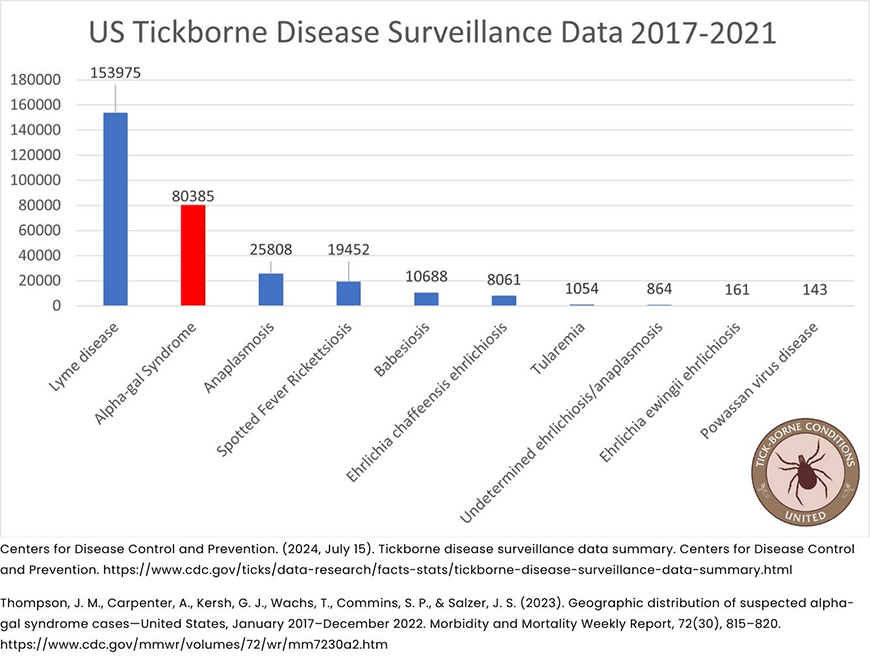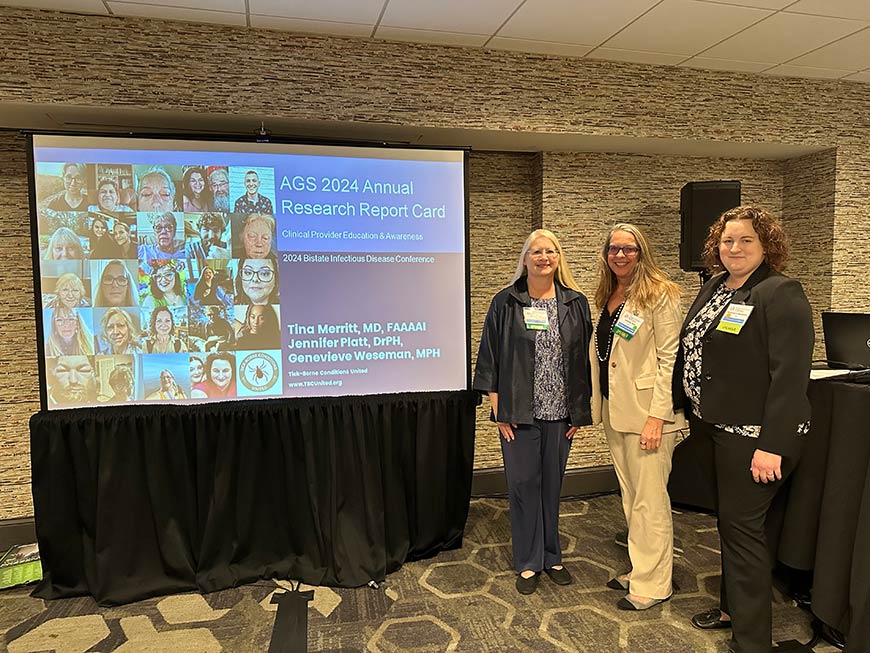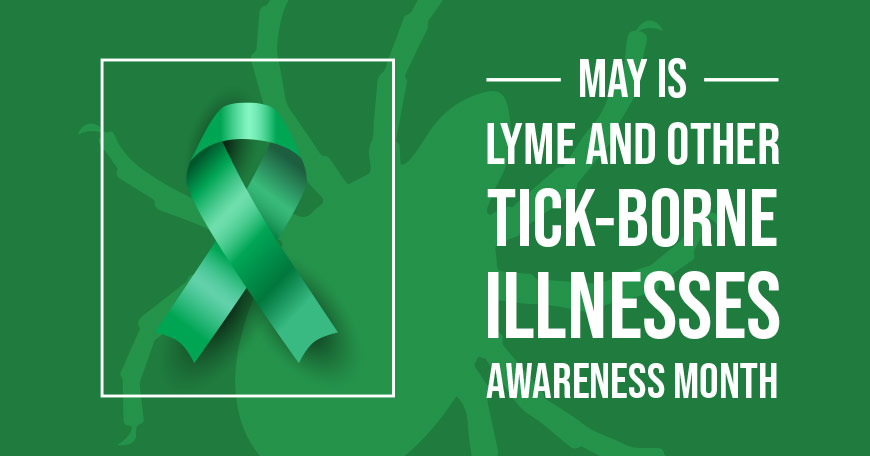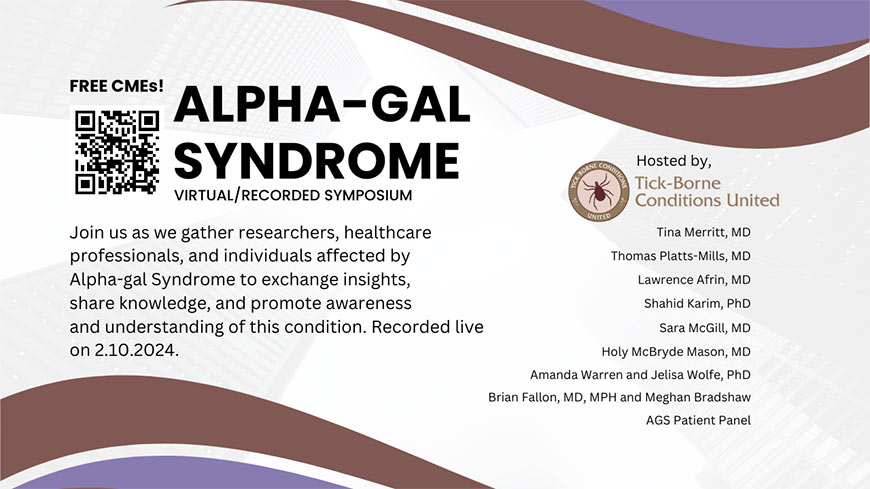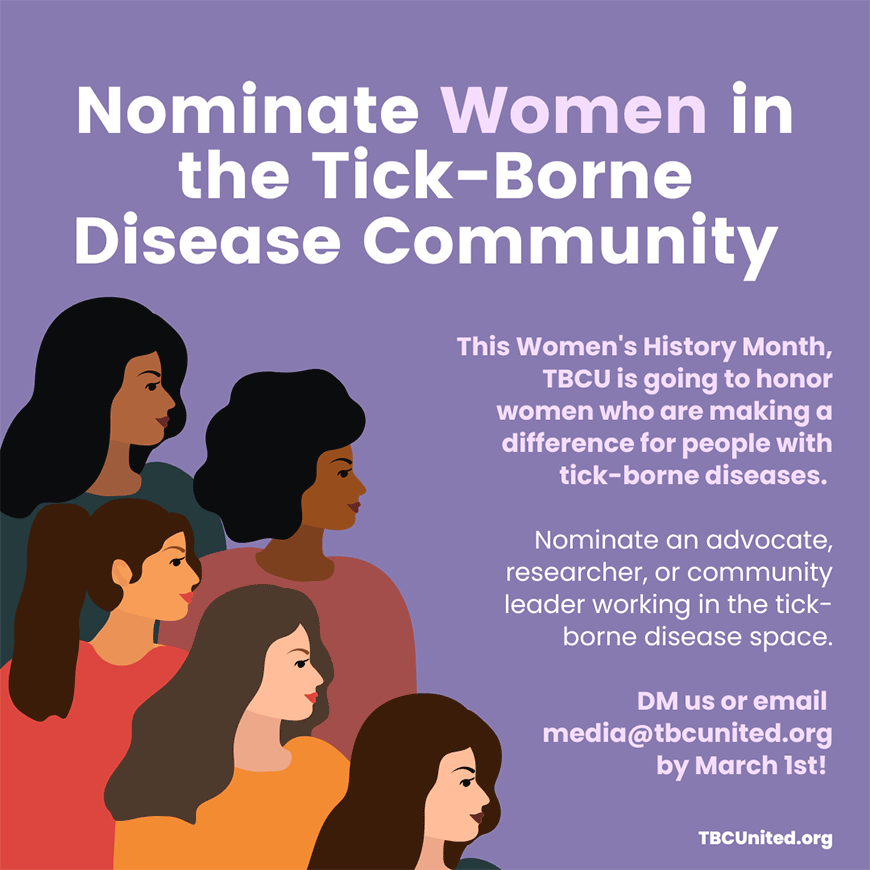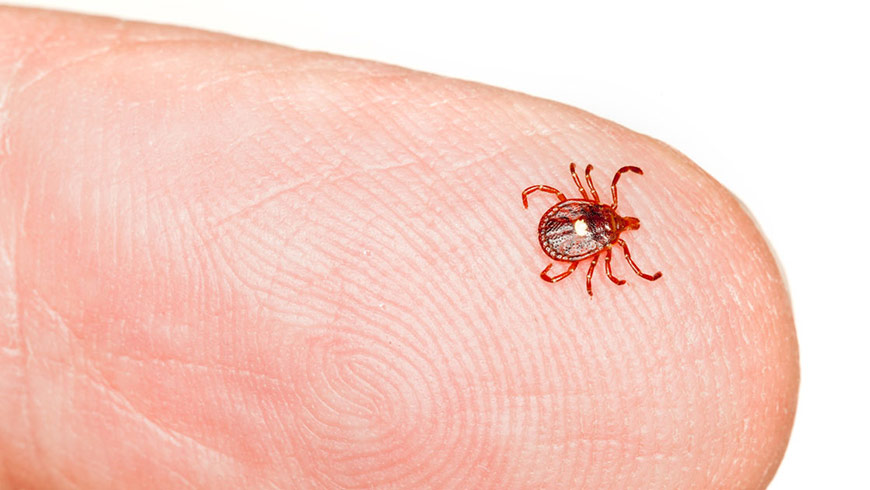U.S. tick-borne disease surveillance data from 2017-2021 Unlike Lyme and…
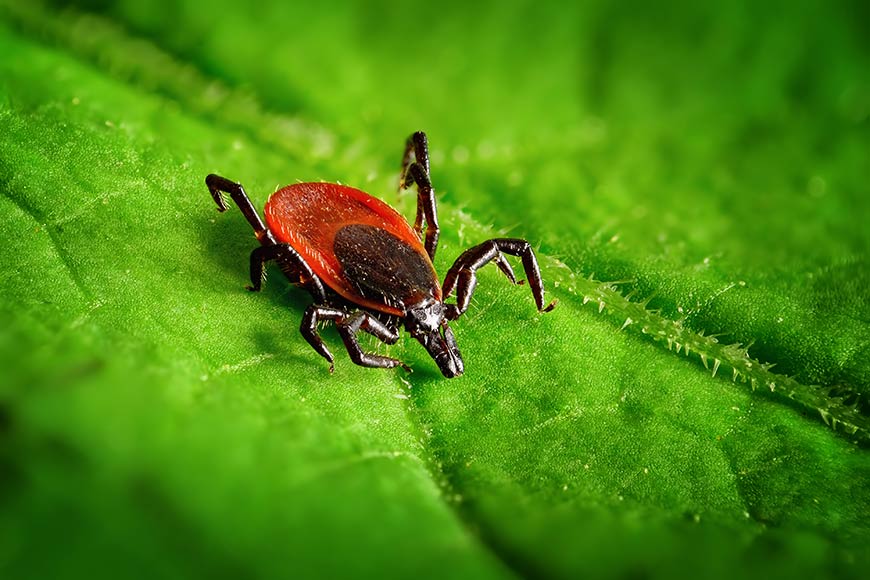
TBC United Responds with Urgent Call to Expand Research and Surveillance.
Authors: Beth Carrison and Jennifer Platt, DrPH
We applaud the U.S. Centers for Disease Control and Prevention (CDC) and the authors of two early-release case studies that confirm blacklegged ticks (Ixodes scapularis and Ixodes pacificus, both of which also cause Lyme disease) as a cause of Alpha-gal Syndrome (AGS). Until now, the lone star tick (Amblyomma americanum) in the U.S. has been considered the primary cause of AGS. This finding marks a pivotal shift in our understanding of AGS cases in the United States and underscores the urgent need for expanded research, physician training, and improved disease reporting protocols.
“Given that tick species worldwide have been linked to AGS, we have long suspected blacklegged ticks in the U.S. as a vector,” said Beth Carrison, co-founder of TBC United and former member of the 2020 Alpha-gal Syndrome Subcommittee under the Tick-Borne Disease Working Group.
“For us, it was never just the lone star tick. Over the years, we’ve heard from thousands of Lyme patients who realized they could not tolerate red meat,” added Dr. Jennifer Platt, co-founder of TBC United and former member of the HHS Tick-Borne Disease Working Group. “This confirmation by the CDC is a long-overdue and critical breakthrough.”
AGS is a potentially life-altering condition, characterized as a delayed food allergy to mammalian-derived ingredients found not only in red meat but also in medications, personal care products, medical treatments, and numerous other sources. With blacklegged ticks found in many areas across the U.S., this discovery has major public health implications.
In response, TBC United urges policymakers, public health agencies, and medical institutions to take immediate action, and calls on members of Congress, the FDA, federal and state health agencies, health care insurers and professional associations, and the Council of State and Territorial Epidemiologists (CSTE) to:
- Expand tick and tick-borne disease surveillance and testing nationwide.
- Make AGS a nationally notifiable condition across all 50 states.
- Amend the federal Food, Drug, and Cosmetic Act to add alpha-gal to the definition of “major food allergen.”
- Support exploratory research into the connection between Lyme disease and AGS.
- Establish standardized AGS testing protocols for Lyme disease patients.
- Train healthcare professionals to properly recognize, test, and manage AGS.
- Educate the public on tick-borne disease prevention, including AG-safe options.
TBC United and its cadre of dedicated volunteers have worked tirelessly since 2017 with policymakers, medical researchers, and patients to raise awareness about the broader risks of AGS and the need for swift, science-based action. Their work helped bring AGS to the national stage through the US Health and Human Services’ Tick-Borne Disease Working Group created under the 21st Century Cures Act.
“This isn’t just about science — it’s about protecting families like mine,” Carrison said. “No parent should have to watch their child suffer from an undiagnosed condition that we could prevent with the right awareness and action.”
Dr. Platt emphasized the broader implications: “I’ve often referred to AGS as ‘Lyme 2.0.’ Maybe this is the missing link for the Lyme patients who remain sick despite years of treatments – if they unknowingly have AGS while still being exposed to mammal ingredients via medications and otherwise, no wonder they can’t get better.”
TBC United urges policymakers, medical professionals, and the public to come together to require labeling, advance research, expand surveillance, and ensure better care for those affected by AGS.
References:
https://wwwnc.cdc.gov/eid/article/31/4/24-1265_article
https://wwwnc.cdc.gov/eid/article/31/4/24-0577_article
Contacts:
Beth Carrison, TBC United (beth@tbcunited.org)
Jennifer Platt, DrPH, TBC United (jennifer@tbcunited.org)
Tina Merritt, MD, Board Chair, TBC United (info@tbcunited.org)

